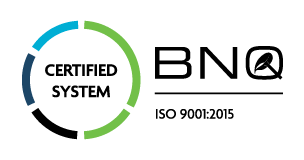Architectural sealant is primarily used on the outsides of buildings. Its main purpose is to keep inclement weather from penetrating the building envelope. The sealant must be flexible enough to remain impenetrable when subjected to thermal expansion and contraction. It must also be able to resist the degradation caused by exposure to UV rays, water and extreme temperatures.
Properties of architectural sealant
Here are some of the most important properties to consider when selecting an architectural sealant:
- Weather resistance: Since this type of sealant is mostly used on building exteriors, it must be able to withstand temperature fluctuations, moisture and constant exposure to the sun.
- Durability: it’s best to select a sealant that will have a long lifespan despite the adverse conditions to which it will be subjected.
- Adhesion: It’s very important to pick a sealant that will adhere well to the surface you will be using it on. The best sealants will adhere well to a wide variety of substrates.
- Low VOC content: Most sealants contain a certain amount of VOCs (volatile organic compounds). These are chemicals that are released into the air and can be harmful to human health. It’s preferable to choose a sealant with a low VOC content.
Types of architectural sealant
- Silicone sealant adheres well to a wide variety of construction surfaces. It remains stable despite exposure to UV rays and can resist extreme temperatures. Unfortunately, silicone sealants cannot be painted.
- Hybrid sealant has all the advantages of silicone, such as resistance to ultraviolet rays and durability, while being paintable like polyurethane sealant. It has a very low V.O.C. content and is solvent, isocyanate and phthalate-free. Our hybrid sealant does not contain any dibutyl tin catalyst.
Get high-quality architectural sealant from Adfast
Adfast is a sealant company that works in partnership with architects to provide first-rate caulking products. Our products are durable, low in volatile organic compounds (VOCs), and can adhere to a wide variety of surfaces. They meet the ASTM C920 standard specification for elastomeric joint sealants and are available in over 400 colours. Contact us for all of your sealing needs!



















